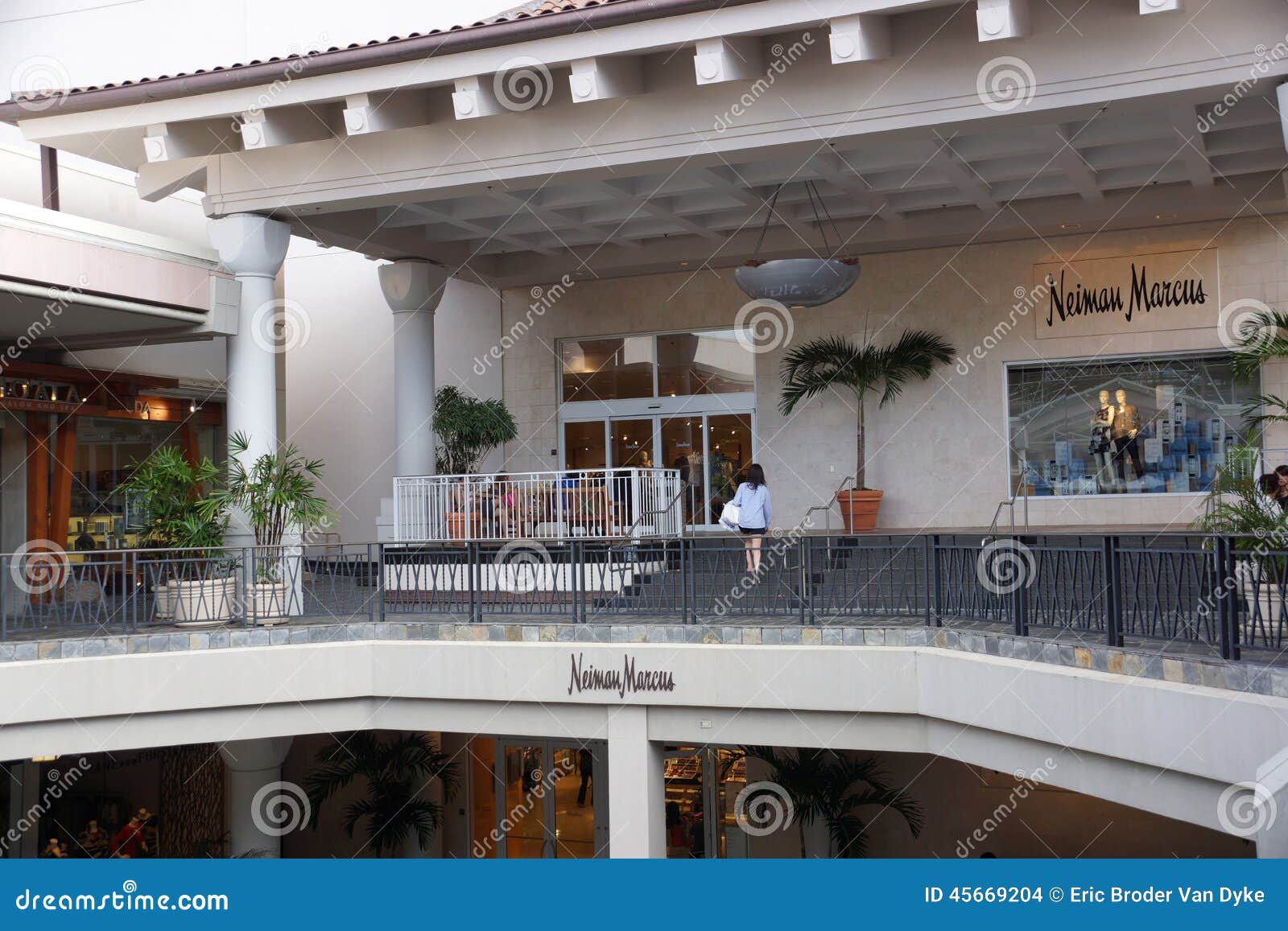Stock Performance Analysis
Neiman marcus stock – Neiman Marcus, a renowned luxury retailer, has experienced significant fluctuations in its stock performance over the past year. Let’s delve into the key metrics and factors that have shaped its stock’s trajectory.
Stock Price and Market Capitalization
Neiman Marcus’ stock price has exhibited volatility, influenced by a range of factors. It reached a 52-week high of $2.92 in November 2022 but has since declined to its current level of $1.86. The company’s market capitalization, which represents the total value of its outstanding shares, has also fluctuated, currently standing at approximately $440 million.
Trading Volume
Trading volume, which measures the number of shares bought and sold, has been relatively low for Neiman Marcus. This indicates that the stock is not actively traded, which may contribute to its price volatility.
Company-Specific Factors
Neiman Marcus has faced challenges related to declining sales, increased competition, and supply chain disruptions. These factors have impacted the company’s financial performance and, consequently, its stock price.
Industry Trends
The luxury retail industry has been affected by changing consumer preferences, the rise of e-commerce, and economic headwinds. These trends have influenced Neiman Marcus’ performance and contributed to its stock’s volatility.
Economic Conditions
Economic conditions, such as inflation and interest rate hikes, have affected consumer spending and impacted the overall retail sector. Neiman Marcus’ stock performance has been influenced by these macroeconomic factors.
Financial Health and Stability
Neiman Marcus’ financial health has been a concern for investors. The company has reported declining revenue and profitability in recent quarters. Its debt levels have also been a source of concern, raising questions about its financial stability.
Industry Analysis
The luxury retail industry is a fiercely competitive market characterized by a constellation of established and emerging players. Key players include LVMH, Kering, Richemont, and Prada, who collectively command a significant market share. These industry giants have built formidable brand portfolios, leveraging their heritage, craftsmanship, and exclusive distribution networks to cater to the discerning tastes of affluent consumers.
The industry’s growth prospects are promising, driven by rising disposable income in emerging markets, particularly in Asia, and a growing appetite for luxury experiences among millennials. However, the industry faces challenges such as economic downturns, geopolitical uncertainties, and the ever-changing consumer preferences that demand constant innovation and adaptability.
Impact of E-commerce and Digital Transformation, Neiman marcus stock
The advent of e-commerce and digital transformation has profoundly impacted the luxury retail industry. Online platforms have expanded the reach of luxury brands, enabling them to tap into new markets and connect with consumers globally. Digital technologies have also enhanced customer experiences, offering personalized shopping journeys, virtual try-ons, and exclusive online offerings.
However, the rise of e-commerce has also brought forth challenges, including the need for seamless omnichannel integration, ensuring brand consistency across physical and digital touchpoints, and addressing concerns related to product authenticity and exclusivity.
Company Strategy and Outlook: Neiman Marcus Stock

Neiman Marcus, an iconic luxury retailer, has weathered economic storms and evolved its strategy to maintain its position in the competitive retail landscape. The company’s customer-centric approach, combined with its focus on personalization and omnichannel experiences, has been instrumental in driving its success.
Competitive Advantages
Neiman Marcus differentiates itself through its unwavering commitment to customer service and its curated selection of high-end merchandise. The company’s personal stylists and dedicated concierge services cater to the unique needs of each customer, fostering lasting relationships and driving loyalty. Moreover, Neiman Marcus’s exclusive partnerships with renowned designers and brands provide customers with access to a wide range of luxury items not readily available elsewhere.
Recent Initiatives and Future Growth Plans
In recent years, Neiman Marcus has invested heavily in digital innovation to enhance its omnichannel presence. The company’s mobile app and website offer seamless shopping experiences, allowing customers to browse, purchase, and track orders with ease. Additionally, Neiman Marcus has expanded its fulfillment capabilities to include same-day delivery and curbside pickup, providing customers with greater convenience and flexibility.
Leadership Team
Neiman Marcus’s leadership team comprises experienced industry veterans with a deep understanding of the luxury retail market. CEO Geoffroy van Raemdonck brings over 30 years of experience in the fashion industry, having held leadership roles at Burberry and Cartier. President and Chief Merchandising Officer Lana Todorovich has a proven track record of success in merchandising and brand management at Neiman Marcus and other luxury retailers. Together, the leadership team is well-positioned to guide Neiman Marcus through the evolving retail landscape and continue its legacy of excellence.
Technical Analysis

Neiman Marcus’ stock performance has been subject to intense scrutiny in recent years, with investors closely monitoring its technical indicators for insights into its future trajectory. By examining chart patterns, indicators, and support and resistance levels, traders can gain valuable insights into potential trading opportunities and risks associated with the stock.
Chart Patterns
Over the past year, Neiman Marcus’ stock has formed a series of chart patterns that provide clues about its underlying trend. A prominent pattern has been the formation of a descending triangle, characterized by a series of lower highs and lower lows. This pattern often indicates a bearish trend and suggests that the stock may continue to decline until it breaks out of the triangle.
Indicators
Technical indicators can provide additional insights into the momentum and trend of Neiman Marcus’ stock. One commonly used indicator is the Relative Strength Index (RSI), which measures the magnitude of recent price changes. When the RSI is above 70, it indicates that the stock is overbought and may be due for a correction. Conversely, when the RSI is below 30, it suggests that the stock is oversold and may be due for a rebound.
Support and Resistance Levels
Support and resistance levels are key technical levels that indicate potential areas where the stock price may find resistance or support. Support levels represent areas where buyers may step in and prevent further declines, while resistance levels indicate areas where sellers may become active and push the price lower. Identifying these levels can help traders determine potential trading opportunities and set stop-loss orders.
Limitations and Considerations
While technical analysis can provide valuable insights into Neiman Marcus’ stock performance, it is important to recognize its limitations. Technical analysis is based on historical data and does not account for external factors that may impact the stock price, such as economic conditions, company news, or industry trends. Additionally, technical analysis is not a perfect science and should be used in conjunction with other factors, such as fundamental analysis, when making investment decisions.
Market Sentiment

Market sentiment plays a pivotal role in shaping the trajectory of Neiman Marcus stock. By analyzing data from social media, news articles, and analyst reports, we can gauge the collective opinion of investors and the general public towards the company.
Key themes and drivers of market sentiment include the company’s financial performance, brand perception, competitive landscape, and macroeconomic factors. Positive sentiment, fueled by strong earnings reports or strategic partnerships, can lead to increased demand for the stock, pushing up its price and trading volume.
Social Media Sentiment
Social media platforms provide a real-time pulse of market sentiment. Positive mentions, shares, and likes on Twitter, Facebook, and Instagram indicate bullish sentiment, while negative comments and criticism can signal bearish sentiment.
News Sentiment
News articles and headlines can significantly influence market sentiment. Positive coverage of the company’s products, management, or industry outlook can boost investor confidence, while negative news can trigger sell-offs.
Analyst Reports
Analyst reports provide in-depth analysis of the company’s financial health, competitive position, and growth prospects. Positive analyst ratings and target price increases can bolster investor sentiment, while downgrades and lowered targets can dampen enthusiasm.
Understanding market sentiment is crucial for investors as it can provide insights into potential price movements and help them make informed trading decisions.
